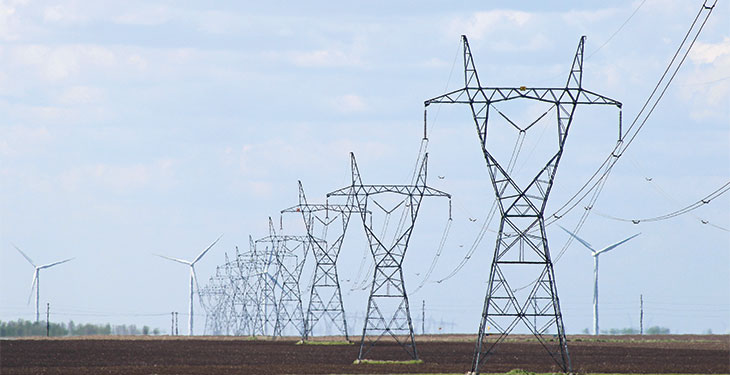The continous increase of the demand of energy, the volatile prices, the supply disruptions, and as well the impact of the sector on the environment are, at this moment, the greatest energetic challenges. Therefore, the European Union (EU) has mobilized resources of its Member States to settle such issues, to think a new European strategy in the energy field, based upon the supply security, competitiveness and sustainability. Moreover, climatic changes that are more and more obvious and the increased energy dependence of our society catalysed such processes proposed by the EU to become a low energy consumption economy. Thus, EU’s energy policy promotes the interconnection of energy networks and the energy efficiency, of course, by carefully monitoring the efficient operation of the market.
 All energy resources, as well as the optimum mix allowing a balance between availability and decrease of harmful emissions are also reconsidered from the sustainability standpoint. Sources of energy considered vary from fossil fuels and nuclear energy to renewable sources – solar, wind energy, biomass, geothermal and hydroelectrical energy.
All energy resources, as well as the optimum mix allowing a balance between availability and decrease of harmful emissions are also reconsidered from the sustainability standpoint. Sources of energy considered vary from fossil fuels and nuclear energy to renewable sources – solar, wind energy, biomass, geothermal and hydroelectrical energy.
In a recent study made for the academic area I have detected several relevant premises and I have used a series of econometric modelling instruments to formulate a reasonable perspective for the evolution of the energy consumption in the EU and Romania. Thus, I have monitored:
– at the European Union level
- the modelling of the relation between the consumption of energy and the gross domestic product
- the modelling of gross domestic product’s energy intensity
– in Romania
- the analysis of the liaison between the gross inland consumption and the final energy consumption
- the modelling of the relation between the final energy consumption and the gross domestic product
- the modelling of the relation between the gross inland energy consumption and the gross domestic product
- the analysis of the causality between the energy intensity of the gross domestic product and the economic development
- the identification of the co-integration relation between the energy intensity of the gross domestic product and the economic development
- the modelling of gross domestic product’s energy intensity
I. The result of the modelling of the relation between the final energy consumption and the gross domestic product at EU level shows us that the change of the gross domestic product positively influences the evolution of the final energy consumption, the increase not being pro rata (mainly due to the decrease in energy intensity with the technological evolution). Except for this correlation, a fixed specific individual effect is registered for each country. Fixed effects are significant, and their size depends on the size of each country.
II. The result of the modelling of the relation between the gross inland energy consumption and the gross domestic product at EU level is similar to the one obtained in case of the final energy consumption, thus the positive change of the gross domestic product indicator positively influences the evolution of the gross inland energy consumption.
We are explaining such dynamics by accepting the assumption that an increase of the gross domestic product comes with a progress in technologies production which results into the relative decrease of the energy consumption. To EU Member States, the modelling of gross domestic product’s energy intensity contributed to drawing the conclusion that the gross domestic product’s energy intensity at Union level, calculated as ratio between the final energy consumption and the gross domestic product registered a decrease trend during the past 20 years, the most accentuated trend being registered by the new EU Member States, including by Romania.
To determine the relation between the final energy consumption and the gross inland energy consumption for EU Member States, I have started the analysis based on the hypothesis that the difference between the gross inland consumption and the final energy consumption depends on the size of the economy and on the level of development of EU Member States.
Results of the panel model were:
- new EU Member States record the highest differences between the final energy consumption and the gross inland energy consumption (as weight from the gross domestic product)
- the negative coefficients present in all countries point out a recovery process of the differences in time
- the recovery of the delay is faster in the new EU Member States
- there is a strong correlation between the size of the delay and the size of coefficients that evaluate the recovery speed.
Thus, a decrease of differences between EU Member States as concerns delays between the gross inland consumption and the final energy consumption is anticipated, measured as ratio towards the gross domestic products (energy intensity indicators).
As concerns the modelling of gross domestic product’s energy intensity for Romania, I have calculated the energy intensity of the gross domestic product based on two options:
- as ratio between the final energy consumption and the gross domestic product
- as ratio between the gross inland energy consumption and the gross domestic product.
In both situations (final consumption, respectively gross inland consumption at 1 mil. € – GDP), the energy intensity decreases linearly.
The forecast of the energy intensity of the gross domestic product (ENI-1, calculated as ratio between the final energy consumption and the gross domestic product), indicates that the decrease of the energy intensity will allay on short and medium term (3-4 years), thus, in Romania of the 2020, the final energy consumption will be of approximately 0.14 tons of oil equivalent at one million € gross domestic product (prices in 2010), compared to 0.15 tons of oil equivalent in 2015.
Forecasted values starting from the above-described model (exponential-linear model with trend break) are presented in table I and graphically in figure I.

As concerns the forecast for short and medium term (setting the horizon to 2020) of gross domestic product’s energy intensity (ENI-2 calculated as ratio between the gross inland energy consumption and the gross domestic product) this is prepared starting from the exponential-hyperbolic model, with trend break. This case also points out that the decrease of the energy intensity will continue on short and medium term (3-4 years), thus, in Romania of the 2020, the gross inland energy consumption will be of approximately 0.19 tons of oil equivalent at one million € gross domestic product (prices in 2010), compared to 0.22 tons of oil equivalent in 2015.
The decrease trend of gross domestic product’s energy intensity was accentuated during massive reorganization and deindustrialization periods of the energetic-intensive segment (steel industry, building materials and others) and continued the decrease trend, in a more moderate rhythm during the last years.
Forecasted values are presented in table II and graphically in figure II.

In both energy intensity calculation versions – as ratio between the final energy consumption and the gross domestic product, respectively as ratio between the gross inland energy consumption and the gross domestic product – the forecasted short- and medium-term trend is of continuous decrease of the energy consumption compared to the selected standard of one million Euro – gross domestic product. In other words, this result indicates an increase of the efficient use of energy resources.
The structure of an economy based upon energy-intensive industries cannot change within a short term. To become a developed country with a competitive economy, Romania must carefully monitor its energetic intensity, an indicator whose level is quite relevant and that must decrease as result of using advanced technologies and of decreasing the weight energy-intensive industries from the gross domestic product.
—————————————-
This analysis firstly appeared in the printed edition of energynomics.ro Magazine, issued in December 2018.
In order to receive this issue of energynomics.ro Magazine, we encourage you to write us at office [at] energynomics.ro to include you in our distribution list. All previous editions are available HERE.
